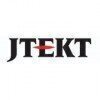Filter interviews by
Bosch Chassis Systems Trainee(Line Leader) Interview Questions, Process, and Tips
Bosch Chassis Systems Trainee(Line Leader) Interview Experiences
1 interview found
I applied via Walk-in and was interviewed before Oct 2020. There were 6 interview rounds.
Interview Questionnaire
11 Questions
- Q1. What is TPM KAIZEN POKA YOKE LINE BALANCING OEE CYCLE TIME TKT TIME
- Ans.
TPM, KAIZEN, POKA YOKE, LINE BALANCING, OEE, CYCLE TIME, TKT TIME are all manufacturing terms related to process improvement and efficiency.
TPM - Total Productive Maintenance, a system for maintaining and improving equipment and processes
KAIZEN - Continuous improvement, a philosophy of making small, incremental improvements to processes
POKA YOKE - Error-proofing, a method of preventing mistakes from occurring in a proc...
- Q2. What is six sigma process
- Ans.
Six Sigma is a data-driven methodology used to improve business processes by reducing defects and variability.
Six Sigma aims to achieve a process that produces no more than 3.4 defects per million opportunities.
It involves five phases: Define, Measure, Analyze, Improve, and Control (DMAIC).
Six Sigma uses statistical tools and techniques to identify and eliminate the root causes of defects.
It is widely used in industrie...
- Q3. What is line balencsing
- Ans.
Line balancing is the process of distributing workloads evenly across a production line to optimize efficiency.
It involves analyzing the tasks required for production
Assigning tasks to workstations based on their capacity and skill level
Ensuring that each workstation has a balanced workload
The goal is to minimize idle time and maximize productivity
Example: In a car assembly line, line balancing would involve assigning ...
- Q4. What is POKA yoke
- Ans.
POKA yoke is a Japanese term for mistake-proofing or error-proofing.
It is a technique used to prevent errors or mistakes in a process.
It involves designing a process or product in a way that makes it impossible or difficult to make mistakes.
Examples include using color coding, shapes, or sensors to prevent errors.
POKA yoke can improve quality, reduce waste, and increase efficiency in a process.
- Q5. What is mistral profing
- Ans.
Mistral proofing is a process of protecting electronic devices from damage caused by mistral winds.
Mistral proofing involves designing electronic devices to withstand the strong winds of the Mistral, a cold and dry wind that blows through the Rhone Valley in France.
This process is important for devices that are used in outdoor environments, such as weather stations, surveillance cameras, and communication equipment.
Mis...
- Q6. What is OEE explain
- Ans.
OEE stands for Overall Equipment Effectiveness. It is a measure of how effectively a manufacturing operation is utilized.
OEE is calculated by multiplying three factors: availability, performance, and quality.
Availability measures the percentage of time that equipment is available for production.
Performance measures the speed at which the equipment runs compared to its maximum speed.
Quality measures the percentage of go...
- Q7. What is FPY explain
- Ans.
FPY stands for First Pass Yield, which is the percentage of products that pass quality control on the first attempt.
FPY is a measure of efficiency and quality in manufacturing.
It is calculated by dividing the number of products that pass quality control on the first attempt by the total number of products produced.
For example, if 100 products were produced and 90 passed quality control on the first attempt, the FPY wou...
- Q8. What is 4M changes
- Ans.
4M changes refer to changes in Man, Machine, Material, and Method in a manufacturing process.
Man refers to changes in the workforce, such as training or hiring new employees.
Machine refers to changes in equipment or technology used in the manufacturing process.
Material refers to changes in the raw materials used in the manufacturing process.
Method refers to changes in the overall process or procedures used in manufactu...
- Q9. What is 14 Q explain
- Ans.
The question is nonsensical and has no clear answer.
There is no logical or mathematical meaning to '14 Q'.
It is possible that the interviewer is testing the candidate's ability to handle unexpected or confusing questions.
The best approach is to ask for clarification or to provide a humorous response.
Example response: '14 Q? Sounds like a secret code for a top-secret mission.'
- Q10. What is 14Q principal
- Ans.
14Q principal is a quality control principle that emphasizes on prevention of defects rather than detection and correction.
14Q principle focuses on preventing defects in the production process
It emphasizes on quality control rather than quality assurance
It involves continuous improvement and defect prevention
Examples include using statistical process control and root cause analysis
- Q11. What is 5S explain
- Ans.
5S is a workplace organization method that aims to improve efficiency and productivity by organizing and standardizing the workplace.
Sort - eliminate unnecessary items
Set in order - organize remaining items
Shine - clean and inspect the workplace
Standardize - establish procedures and standards
Sustain - maintain and improve the system
Example: organizing tools in a toolbox
Example: labeling and arranging files in a cabinet
...
Interview Preparation Tips
Skills evaluated in this interview
Top trending discussions






Interview questions from similar companies

Interview Questionnaire
1 Question
- Q1. Genral diploma mechanical Related question

I applied via Walk-in and was interviewed before Sep 2020. There were 3 interview rounds.
Interview Questionnaire
2 Questions
- Q1. What is company production in here?
- Ans.
The company production refers to the manufacturing and output of products or services by the company.
Company production refers to the quantity and quality of goods or services produced.
It includes the manufacturing process, assembly, packaging, and delivery of products.
Production can also involve the provision of services, such as software development or consulting.
The company's production may vary depending on factors...
- Q2. What is function of shock absorber?
- Ans.
Shock absorbers are devices used in vehicles to absorb and dampen the impact of bumps and vibrations.
Absorb and dampen the impact of bumps and vibrations
Improve vehicle stability and control
Enhance driver and passenger comfort
Reduce wear and tear on other vehicle components
Maintain tire contact with the road surface
Prevent excessive bouncing and bouncing
Provide consistent handling and braking
Examples: coilover shocks,
Interview Preparation Tips

I applied via Campus Placement and was interviewed in Mar 2020. There were 3 interview rounds.
Interview Questionnaire
3 Questions
- Q1. Apart from IQ there is a part of EQ questions asked in an interview like how many friends do you have?
- Q2. How much socially active you are on social media platforms?
- Q3. If any question regarding a current political issue is raised what to do?
- Ans.
Stay neutral and provide factual information without expressing personal opinions.
Remain calm and composed
Avoid expressing personal opinions
Stick to factual information
Provide multiple perspectives if applicable
Encourage further research and discussion
Interview Preparation Tips

Interview Preparation Tips
Experience: The first stage involves a test, comprising of around 40 questions, 25 technical questions and 15 logical reasoning and data interpretation questions together. Technical questions were from basic electronics books and also some micro-controller questions, and the LR and DI questions were like any normal questions you would come across for any normal aptitude test. Out of a total of 200 students who wrote the test, 60 or odd people were selected for the interview rounds.
Tips: For aptitude part- Your brains, cause all the questions in this section is easy to solve.
Round: Technical Interview
Experience: The 1st interview was the technical interview round where again basic electronics stuff like transistors as amplifiers, zener diodes and such other simple electronic devices. Here they also ask you about your projects (if any, hope you have done one!) and ask you to validate why you chose to do such and such a project and its relevance in the modern day. A word of caution here would be to put only those projects on your resume' which you can back up and clearly identify the role you have played in it, and explain with clarity on being cross-questioned.
Tips: For the technical part- 8051 UC, 8086 UP, Boylestad, Gaykward.
Round: HR Interview
Experience: If you've done well in the 1st round , then you'll be handed a HR form , which you'll have to fill and wait for the HR round. Beware the HR round might be an elimination round (as some other websites do caution),so be your best, answer any HR question with confidence. Normal HR questions pertaining to family background and your interest in higher studies will be questioned. Hint: If you're interested in doing your GRE/GATE after 4th year, you might not want to mention that. But i didn't have that dilemma to face, but my friends did, so be careful.
General Tips: I have been placed in 3 companies including ROBERT BOSCH, the other 2 being TCS and IBM. Maybe what i want to tell you guys reading this is that, no matter which company you have been placed in / or not placed in, you should always pursue your dream company no matter what, because it is the dream company that gives us true satisfaction of having been placed. I know many of my friends who have been placed but are not happy with having been placed. This s not an emotion that you want to spend during your final year, or even in your life. Had i not been placed in BOSCH , i probably would have pursued it off campus. So to sum it all up, sit for companies you only want to get placed in, or it is similar to having an Eclairs, while you always dreamt of the Bournville.
Typical questions that one should ask during the interview should be (if the interview went smoothly) is "What role/ responsibility will i be allotted to if i join the company?", "What is my career growth?", "Any compensation is being offered or not? "and finally (if the salary is unreasonably low), ask them about the salary and all the benefits involved in it.
Skill Tips: This experience of joining the company that you always dreamed of working for, is truly an exhilarating one. Wishing you all whoever's reading this Gyan edit, will enjoy the experience as much as i did.
Focus on electronic devices, everything from basics, and read up all the books mentioned above by me, and try to remain calm and confident during the whole process.
Skills:
College Name: NIT Surathkal

I applied via Recruitment Consulltant and was interviewed before Jun 2021. There were 2 interview rounds.

(1 Question)
- Q1. What is Quality, what is 7Qc tools, what is 8QB , what is 7 sefty fundamental, what is 7 golden Rule, what is 5S.
- Ans.
Quality is meeting or exceeding customer expectations. 7QC tools, 8D, 7 safety fundamentals, 7 golden rules, and 5S are quality improvement methodologies.
7QC tools are a set of problem-solving tools used to improve quality. Examples include Pareto charts, fishbone diagrams, and control charts.
8D is a problem-solving methodology used to identify, correct, and prevent problems. It involves eight steps, including defining...
Interview Preparation Tips
- Quality

I applied via Walk-in and was interviewed before Jan 2020. There was 1 interview round.
Interview Questionnaire
2 Questions
- Q1. Question's from your course which you studied and about basic general knowledge
- Q2. How you face the problem incase you in critical situation inside the plant
Interview Preparation Tips
And say the answer boldly with face to face.

I applied via Campus Placement and was interviewed in Nov 2020. There were 4 interview rounds.
Interview Questionnaire
1 Question
- Q1. What is automotive electronics
- Ans.
Automotive electronics refers to the electronic systems used in vehicles for various functions.
It includes systems for engine management, safety features, entertainment, and communication.
Examples include anti-lock braking systems, airbag control units, infotainment systems, and GPS navigation.
Automotive electronics have become increasingly important as vehicles become more advanced and connected.
They play a crucial ro...
Interview Preparation Tips

I applied via Recruitment Consultant and was interviewed in Apr 2021. There was 1 interview round.
Interview Questionnaire
1 Question
- Q1. Question about stress strain diagram
Interview Preparation Tips

I applied via Recruitment Consultant and was interviewed in Oct 2020. There were 3 interview rounds.
Interview Questionnaire
4 Questions
- Q1. GD&T symbols & explanation
- Ans.
GD&T symbols are used to specify geometric tolerances on engineering drawings.
GD&T stands for Geometric Dimensioning and Tolerancing
It is a system of symbols used to specify the allowable variation in form and size of features on a part
Examples of GD&T symbols include: flatness, perpendicularity, concentricity, and position
GD&T is important for ensuring parts are manufactured to the correct specifications and fit toget
- Q2. How to check true position on CMM
- Ans.
True position on CMM can be checked using a combination of software and hardware tools.
Use a calibrated probe to measure the feature location
Compare the measured location with the nominal location
Calculate the deviation and compare it with the tolerance
Use software tools like GD&T to analyze the results
Ensure the CMM is calibrated and the probe is in good condition
- Q3. What is FMEA
- Ans.
FMEA stands for Failure Mode and Effects Analysis. It is a systematic approach to identify and prevent potential failures in a process or product.
FMEA is used to identify potential failures in a process or product and their effects on the system.
It involves analyzing the likelihood of failure, severity of the consequences, and the ability to detect the failure before it occurs.
FMEA is commonly used in industries such a...
- Q4. How to do instrument selection
- Ans.
Instrument selection involves identifying the appropriate tools and equipment for a specific task or process.
Identify the purpose of the instrument
Consider the accuracy and precision required
Evaluate the cost and availability
Ensure the instrument is compatible with other equipment
Consider the maintenance and calibration requirements
Interview Preparation Tips
Skills evaluated in this interview
Bosch Chassis Systems Interview FAQs
Tell us how to improve this page.
Bosch Chassis Systems Interviews By Designations
- Bosch Chassis Systems Quality Inspector Interview Questions
- Bosch Chassis Systems Quality Engineer Interview Questions
- Bosch Chassis Systems Graduate Apprentice Interview Questions
- Bosch Chassis Systems Production Interview Questions
- Bosch Chassis Systems Trainee Technician Interview Questions
- Bosch Chassis Systems Engineer Trainee Interview Questions
- Bosch Chassis Systems Trainee Interview Questions
- Bosch Chassis Systems Senior Engineer Interview Questions
- Show more
Interview Questions for Popular Designations
- Line Leader Interview Questions
- Production Line Leader Interview Questions
- Sales Team Leader Interview Questions
- Senior Team Leader Interview Questions
- Team Leader (Technical) Interview Questions
- Process Leader Interview Questions
- Senior Leader Engineer Interview Questions
- Assistant Team Leader Interview Questions
- Show more
Interview Questions from Similar Companies
Fast track your campus placements
|
Quality Engineer
186
salaries
| ₹1.2 L/yr - ₹3.6 L/yr |
|
Trainee
151
salaries
| ₹1.5 L/yr - ₹2.8 L/yr |
|
Engineer Trainee
113
salaries
| ₹1.4 L/yr - ₹3 L/yr |
|
Quality Inspector
95
salaries
| ₹1.5 L/yr - ₹3 L/yr |
|
Production Engineer
94
salaries
| ₹1.8 L/yr - ₹3.5 L/yr |

Bosch

Faurecia

Hitachi Astemo

Valeo
- Home >
- Interviews >
- Bosch Chassis Systems Interview Questions >
- Bosch Chassis Systems Trainee(Line Leader) Interview Questions











